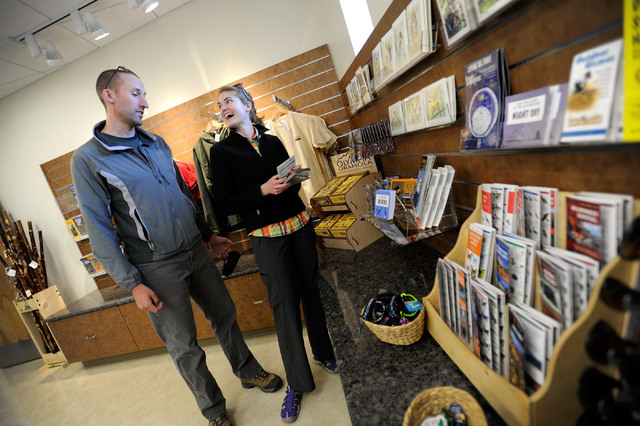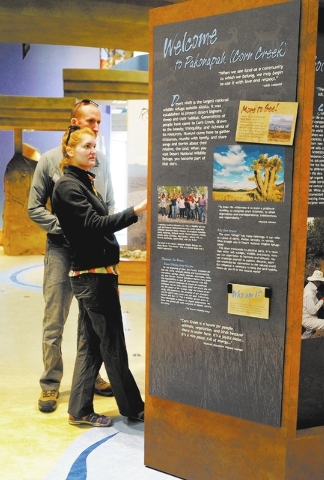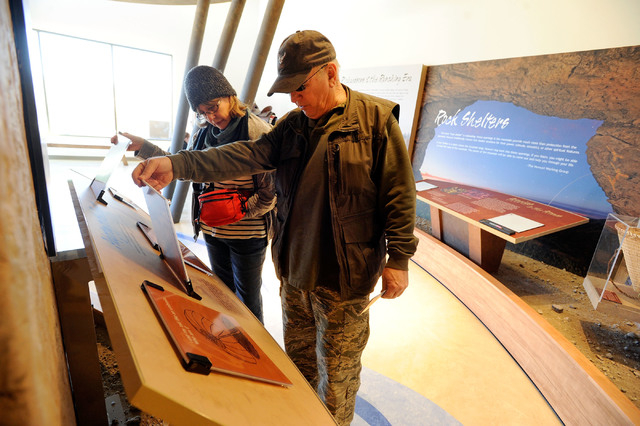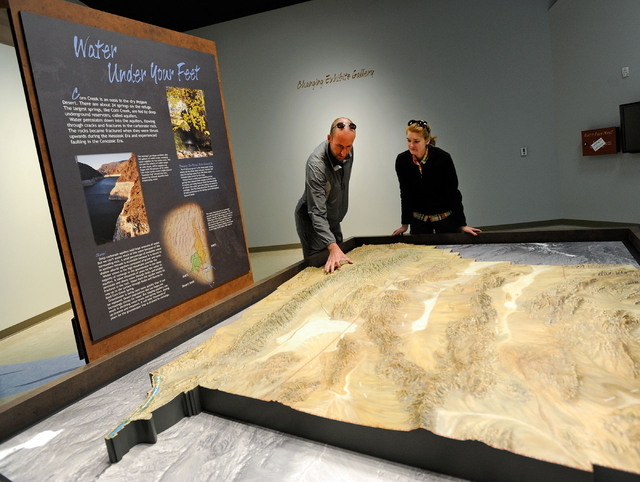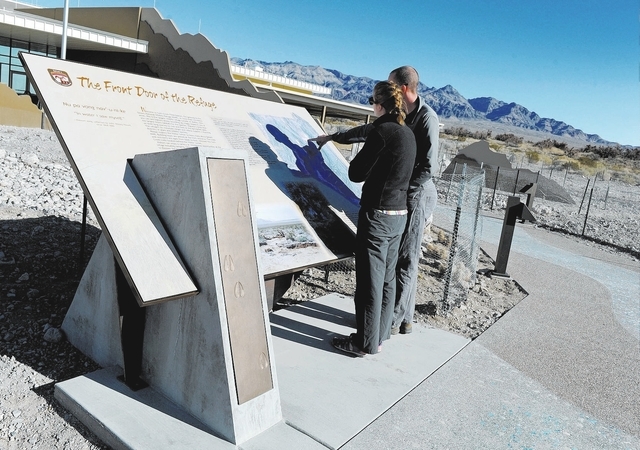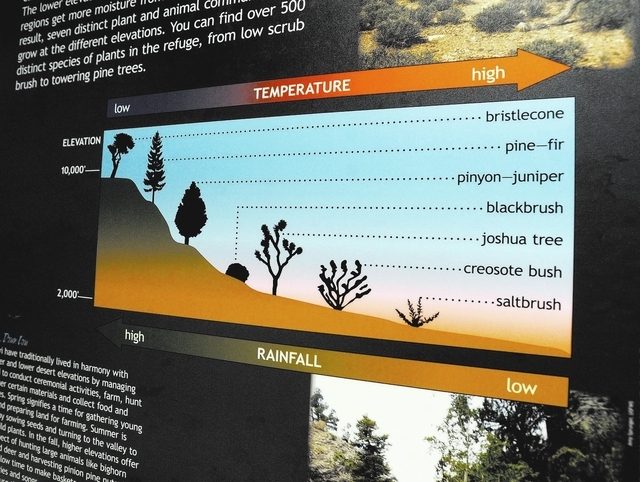Center welcomes visitors at national wildlife refuge north of Las Vegas
Just minutes north of Las Vegas sits the largest national wildlife refuge outside of Alaska, but the welcome to visitors has long been understated, to say the least.
“We were working out of a small trailer to greet visitors for 13 years,” said Amy Sprunger, who was manager of the Desert National Wildlife Refuge during that time.
But a decade of planning has at last culminated in a new 10,000-square-foot visitor center that includes administrative offices, solar panels, 8-inch-thick concrete walls for insulation, and an unusual heating and cooling system, a package the refuge hopes will land it the highest certification for sustainability from the U.S. Green Building Council, LEED Platinum.
The 2,500-square-mile refuge could hold two Rhode Islands and still have enough room for 250,000 football fields.
The visitor center and refuge are reachable by taking U.S. Highway 95 north out of Las Vegas. About 13 miles after passing the Las Vegas Beltway, take a right on Corn Creek Road, a dirt road that leads to the visitor center.
Funding was always the center’s obstacle and stalled the ground-breaking of the $12 million facility, which included a $1 million expenditure just to bring the utilities up to snuff. The building opened its doors days ago, less than a year after breaking ground.
“The U.S. Fish and Wildlife Service is a very poor agency,” Sprunger said.
Funding came through the Southern Nevada Public Land Management Act. The 1998 law allows the Bureau of Land Management to sell public land within a specific boundary around Las Vegas. Of that revenue, 5 percent goes to the state’s general education fund, 10 percent is given to the Southern Nevada Water Authority, and the rest is put into an account available to the secretary of the interior for things like the visitor center.
The building, made to look like stucco, seems at home in the Mojave Desert, welcoming visitors to a land of six mountain ranges. Landscapes vary from the Sheep Range — which reaches heights of 10,000 feet — to valleys as low as 2,500 feet.
The refuge is home to about 320 bird species, 53 mammal species, 35 reptile species, and four amphibian species that have been identified on the refuge, as well as more than 500 plant species.
Although the visitor center’s grand opening won’t be until Feb. 22, from 10 a.m. to 2 p.m., it’s already open on Fridays, Saturdays and Sundays. The displays detail the land’s history, people and animal species, including three stuffed bighorn sheep scaling a rocky slope inside the building.
Outside, all the trails leading from the visitor center have been improved with most being handicapped accessible.
Solar panels cover carports in the parking lot, and the building uses the pond behind it for heating and cooling, cycling water through its climate-control system.
Sprunger said now that it has the visitor center, the refuge is now looking for volunteers to staff it. That way, it can be open more than three days a week. Those interested can call 702-515-5450.



